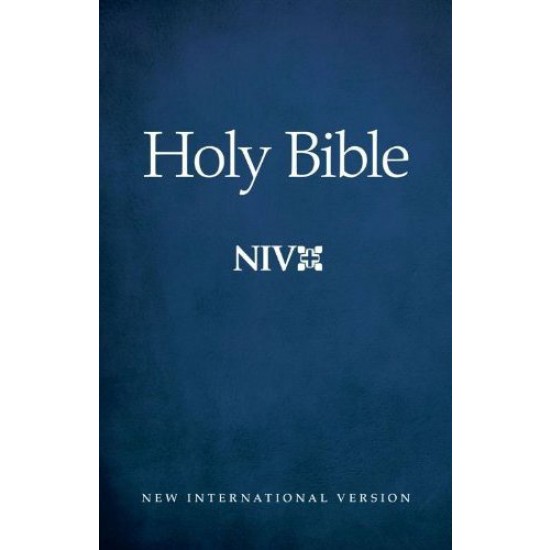If you’ve kept an eye on the headlines at all you are aware that 2014 marks the 50th anniversary of the NIV, an enormously successful and influential Bible translation. To mark the celebration here at Books At a Glance, we are very pleased to have our good friend Dr. Douglas J. Moo, Chair of the Committee on Bible Translation (CBT) here to talk to us about their work.
Books At a Glance (Fred Zaspel):
First, congratulations are in order: I was so happy to see the publication of Studies in the Pauline Epistles: Essays in Honor of Douglas J. Moo. It’s a wonderful collection of essays, and it is honor where honor is due. Hearty congratulations for this well-deserved recognition of your outstanding – and faithful – career in New Testament studies.
The NIV is celebrating its 50th birthday this year, but the NIV was not released until 1978. Would you explain this seeming discrepancy for us?
Doug Moo:
The celebration focuses on the conception of the NIV. The critical formative meetings that started the process leading to the NIV were in 1964 and 1965. We think it appropriate to honor these dates, since one of our purposes is to focus on the climate in which the NIV came to be and to celebrate the scholars who put so much hard work into the project.
Books At a Glance:
When did you begin serving with the Committee on Bible Translation (CBT)? What was your role then? And can you describe for us your role as Chair of that committee?
Doug Moo:
I was asked to join the committee in 1996. For two years or so, I was one of the rookies, figuring out just how this process of translation – and particularly the NIV translation – worked. I then served as a regular committee member for almost a decade before becoming chair in 2006. I stepped into very big shoes: John Stek had led the committee very ably for over two decades. The responsibilities of the chair include setting agenda for our annual meetings (mainly gathering and organizing proposals to consider), leading committee discussions, and representing the committee in various venues – with our associates at Biblica and Zondervan and with the public at large.
Books At a Glance:
You are well known for your work as an exegete and Bible commentator and as a Bible translator also, and on several occasions you have mentioned your love for both. How do these two works compare … and differ? What are some goals and considerations that drive each, respectively?
Doug Moo:
I have a passion to figure out what the text of Scripture is saying. This task is what one might call “pure exegesis” – which I love. Of course, exegesis of Scripture must always have personal consequences. But one is usually also “packaging” one’s exegesis for various purposes: writing a commentary, preaching to a congregation, leading a Bible study – or translating. Exegetes do not always make good translators; indeed, I might go so far as to say they usually don’t. Exegetes, especially those working at more academic levels, often recognize the difficulty of settling on one meaning for a text; and they are inclined to express their conclusions in very qualified ways. But a translator has to be clear; one can’t put several different meanings in the text (although footnotes can register important options at times). Moreover, translation is an act of communication; and exegetes are not always especially good at putting the meaning they have discovered in clear, simple English. Translators, to put it simply, must be both experts in the biblical text and experts in expressing meaning simply in contemporary English.
Books At a Glance:
We’ve all heard the debates over formal or dynamic equivalence, that translators cannot choose absolutely but place themselves at varying points between these theoretical ideals, and so on. Can you describe for us briefly the position the CBT has taken on this question? What considerations must be factored into this question? And were there any “behind the scenes” kinds of deliberations that may help us understand the decision process?
Doug Moo:
As I mentioned a moment ago, translation is an act of communication. As we all know, we can have the greatest ideas in our head, but if we are unable to express them in way that our audience understands, we have failed as communicators. The problem with too much attention on “form” is that we end up trying to express meaning in ways that few modern readers will understand. Of course, the opposite problem is to choose forms of communication that don’t match what the text is actually saying. In other words, the key tension here is not form vs. meaning but, in practice, form vs. natural English.
From the beginning, the NIV has taken a mediating position on this issue. The manual produced when the translation that became the NIV was first being planned states that “If the Greek or Hebrew syntax has a good parallel in modern English, it should be used. But if there is no good parallel, the English syntax appropriate to the meaning of the original is to be chosen.” It is fine, in other words, to carry over the form of the biblical languages into English – but never at the expense of natural expression. Of course, this approach is deliberately pretty general – and “the devil is in the details.” One of key things we seek to do on the CBT is to implement this guideline in all our specific translation decisions. So we often will debate, when considering a couple of options for translation, this general principle. Are we sticking so close to the form of the Hebrew and Greek that we are not making good sense in English? Or does our proposed rendering make good English sense while obscuring what is really going on in the text?
Books At a Glance:
Okay, if I may, I’d like to turn to a question a bit more controversial and give you opportunity to respond. There has of course been a lot of noise made over the question of the NIV’s “gender neutral” translations, some people even contending that the CBT has an egalitarian agenda. Would you speak to this for us? And from a translator’s perspective, just what considerations give rise to this issue in the first place?
Doug Moo:
Our decisions about gender are part and parcel of our fundamental translation philosophy: figure out what the text is saying, then find a way to express that meaning in natural, contemporary English. The original NIV translators insisted that CBT would need to meet regularly to update the translation – not just to reflect advances in our understanding of the text but also to keep the English up to date. We all have different forms of English, depending on where we were raised, educated, etc. But both the authorities and a careful attention to the English being used all around us makes clear that English has changed in the way it expresses gender. The day is gone when “a man” naturally refers to a human being of any gender; for most speakers of English, it means “a male person.” The decision to render key biblical terms that used to be translated “man” as “person” is simply a matter of accuracy (a point the ESV translators also recognize by changing hundreds of occurrence of “man” in the RSV to “person,” or the like).
To put it simply: our “agenda” on the CBT is clear and single: to put the meaning of the Scriptures into accurate, natural, and contemporary English. We view our gender decisions in this context – and only in this context. To render expressions in the original text that clearly refer to human beings in general with words such as “man,” “he,” etc., is to betray our mandate to put the Bible into accurate English.
Books At a Glance:
On a practical level, perhaps you could share some thoughts on how best to choose a Bible translation. What are some important guiding considerations? And how might these considerations differ with regard to individual Christians and local church congregations?
Doug Moo:
One’s level of ability in reading and understanding English is an obvious initial consideration. A lot of people in our world simply can’t read very well. For them, a translation that uses quite simple English, such as the NLT or the NIrV (the updated NIV put into simple English), might be advisable. For most English readers, just about any of the major translations (NIV, ESV, NRSV, HCSB) will provide accurate access to the Scriptures in English.
I am biased, of course, but I strongly recommend the NIV – for four reasons. First, its translation philosophy hits the “sweet spot” between unduly loose and unnecessarily wooden translations. Second, it is the widest use English translation in the world – so you will be more likely to find fellow students of Scripture using it. Third, it has the broadest base in the evangelical community – a product not of one publisher (sole control of the text is in the hands of the independent CBT), or one theological tradition, but of the broadly evangelical movement. And, fourth, the NIV, because of its history and wide influence, is the basis for a great number of Bible resources – far more than exist for any other translation.
Books At a Glance:
Before we let you go, perhaps you can tell us something about the success of the NIV. In terms of sales, use, and influence, how is it doing? And compared to the earlier edition, how is the 2011 NIV being received?
Doug Moo:
The NIV, as it has been for many decades now, remains the most popular English translation in the world. Accurate statistics are notoriously difficult to come by (because of the many venues in which Bibles are distributed), but it seems that the NIV is the choice of approximately 30% of English Bible readers. The Bible “market” is very different now than it was when the NIV was first published – we now see many more options in the world of English Bibles. But we are finding people who use the updated NIV (2011) very satisfied with their reading experience.
Books At a Glance:
With the 2011 edition now behind you, what does the ongoing work of the CBT look like?
Doug Moo:
As I mentioned earlier, it is part of our charter on CBT to keep the NIV fresh. We meet every year to consider ways in which we can better reflect in the translation the fruit of biblical study and the state of the English language. At some point – perhaps 8-10 years from now – we will probably release a new edition.
Buy the books

NIV, Thinline Reference Bible
